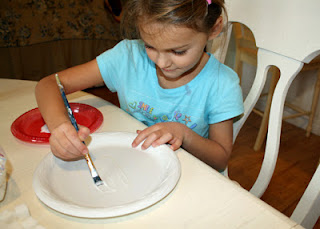History Odyssey Lesson 3 focuses on Mesopotamia, the first civilization of Sumer, cuneiform writing and ancient temples called ziggurats. Since the number of activities for Part 1 and Part 2 seemed a bit lopsided, I decided to divide the workload a little more evenly. What isn't listed below, we will complete next week. I also felt like the recommended ziggurat project was a bit much for us, so we went with a much quicker and simpler one.
Monday
- Looked up and defined HO dictionary word for Lesson 3, Main Lesson Part 1, word number one.
- Read Usborne: Ancient World by Fiona Chandler (pages 6-7).
- Completed corresponding Blue House School ancient world worksheets.
- Completed HO map work for Lesson 3, Main Lesson Part 1.
- Read The Golden Sandal: A Middle Eastern Cinderella Story by Rebecca Hickox.
Tuesday
- Looked up and defined HO dictionary word for Lesson 3, Main Lesson Part 1, word number two.
- Completed "Ancient Mesopotamia" history pocket (student booklet, words to know, and ziggurat pop-up book).
- Read A True Book: Mesopotamia by Sunita Apte.
 |
| The pop-up ziggurat book was Tessa's favorite part of the "Ancient Mesopotamia" history pocket. This activity required precision folding, cutting and gluing, all of which were challenging for her. |
 |
| Tessa's completed pop-up ziggurat book! How cool is that?! |
Wednesday
- Completed "Quick and Sweet Ziggurat" from Ancient Egyptians and Their Neighbors: An Activity Guide by Marian Broida.
Other Books of Interest
- City of Rainbows: A Tale from Ancient Sumer - Karen Pollinger Foster
- History Opens Windows: The Sumerians - Jane Shuter
* HO = History Odyssey
Quick and Sweet Ziggurat
History Odyssey lists "Model Ziggurat" from Ancient Egyptians and Their Neighbors: An Activity Guide by Marian Broida as this week's recommended project. While I think it's a worthy project, it requires way too much prep work, skill and drying time for Tessa's age set. Maybe we'll try it during our second cycle of ancients when Tessa is a middle schooler. Instead, we completed "Quick and Sweet Ziggurat", which is listed as an alternative project at the end of "Model Ziggurat". Most supplies for "Quick and Sweet Ziggurat" can easily be found around the house. We only had to buy a $1.50 box of sugar cubes from Wal-Mart.
 |
| Tessa created a rectangle with rows of six cubes, four cubes deep. She stacked the rest of the cubes pyramid style to the top. |
 |
| Sugar cubes cut into halves made perfect stairs. |
 |
| Tessa's sugar cube ziggurat. Quick and sweet for sure! |
Looking for more Mesopotamia lesson ideas?
Check out my Label a Sumerian Chariot Diagram and Standard of Ur Writing Paper & Toppers digital curriculum helpers!



No comments:
Post a Comment